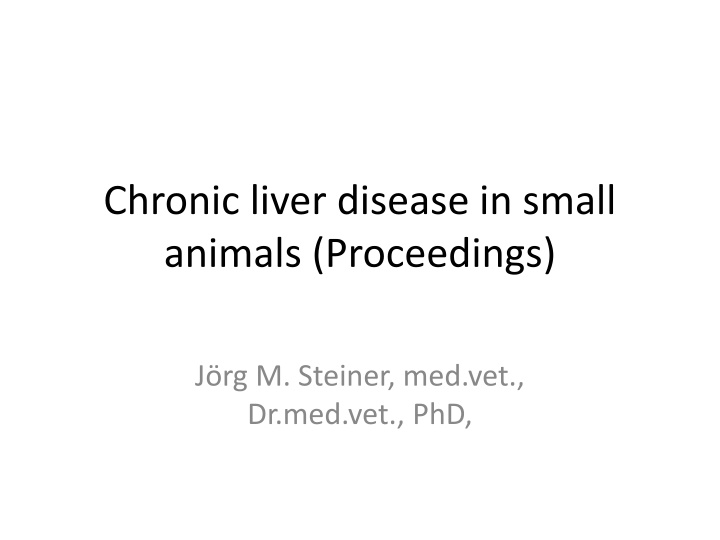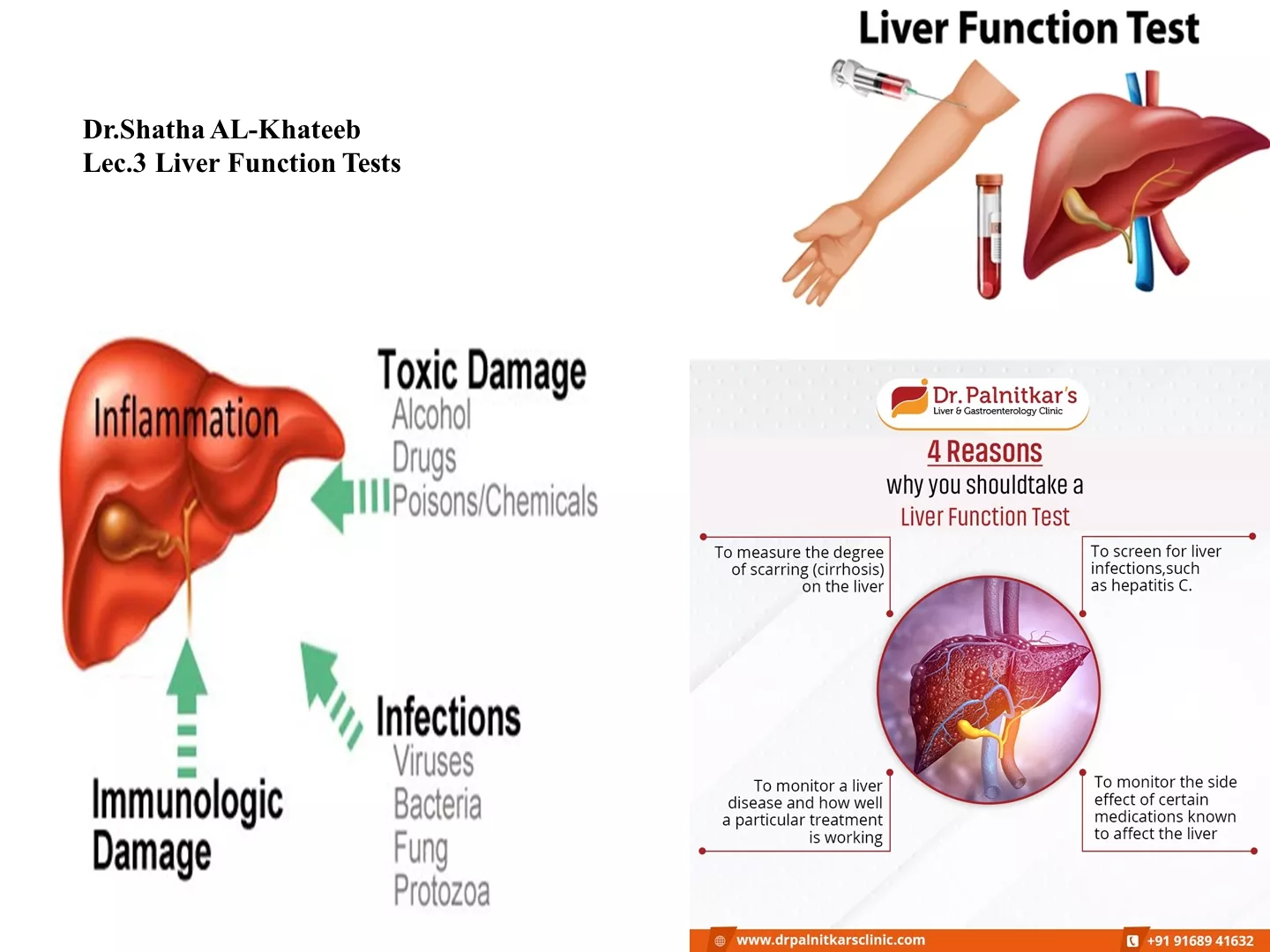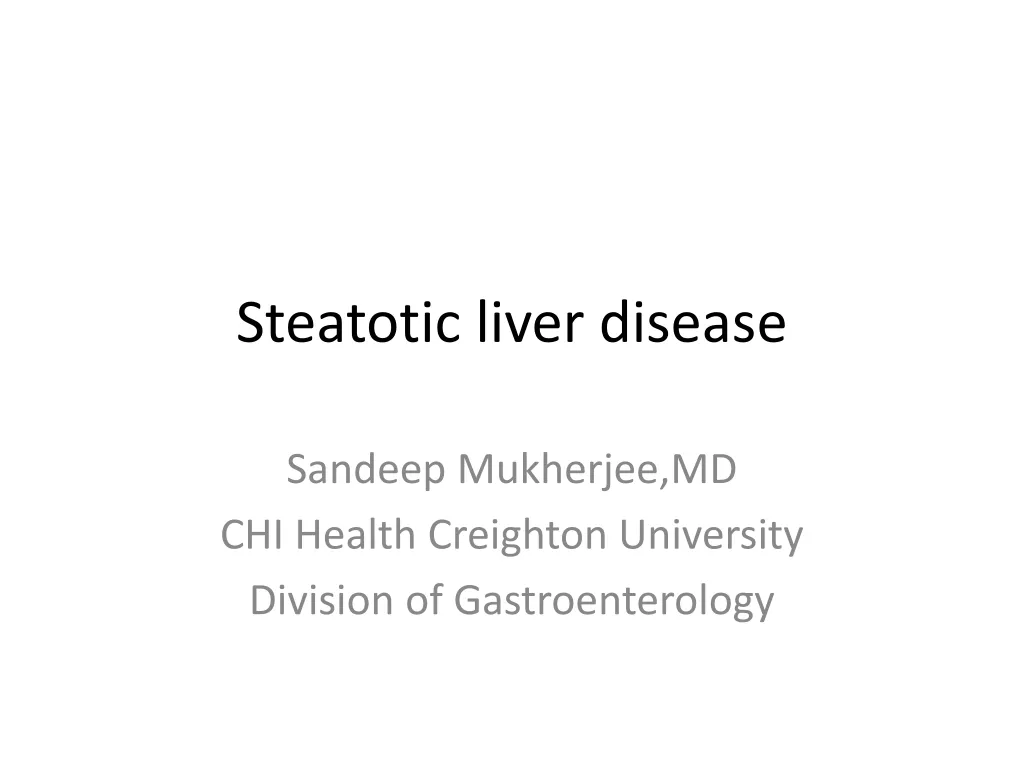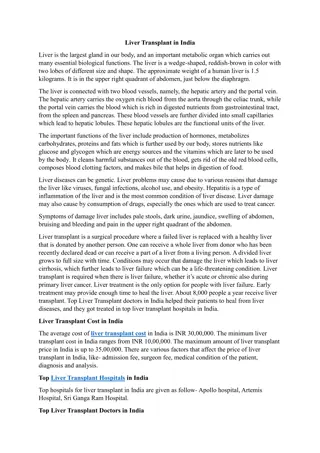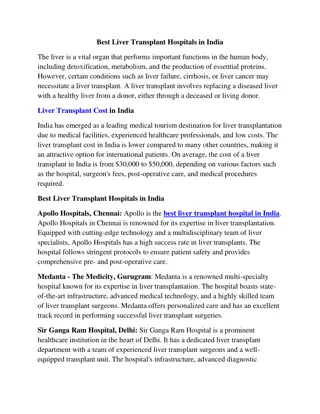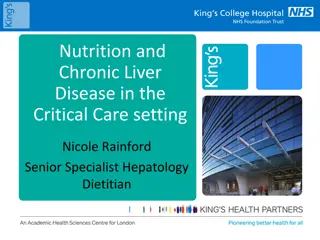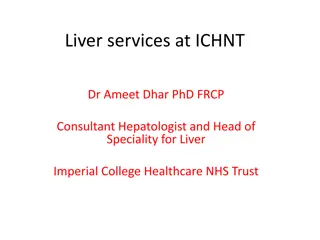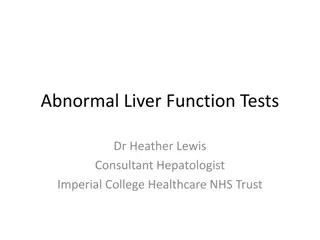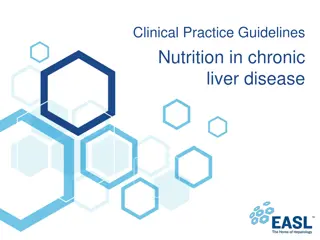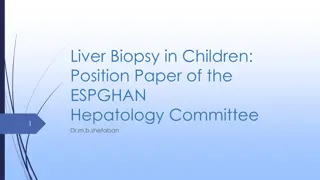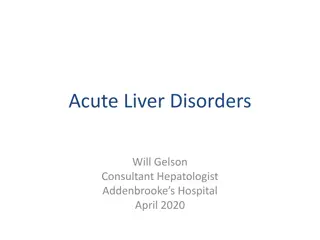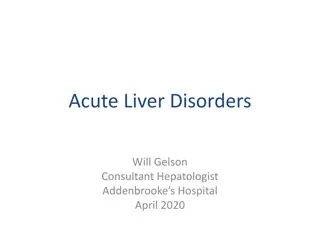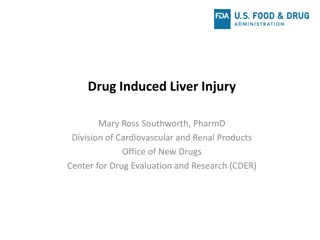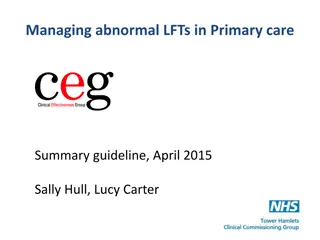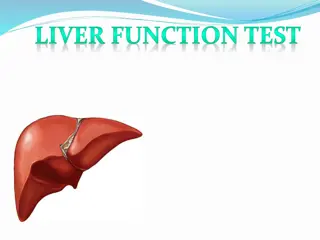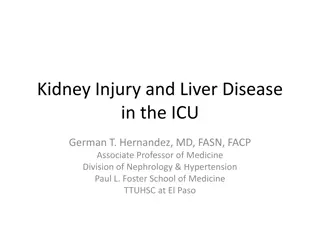Chronic Liver Disease in Small Animals
Chronic liver disease is common in dogs and cats, with chronic hepatitis/cholangitis being significant conditions. Learn about causes, clinical signs, and implications of liver disease in small animals.
Download Presentation

Please find below an Image/Link to download the presentation.
The content on the website is provided AS IS for your information and personal use only. It may not be sold, licensed, or shared on other websites without obtaining consent from the author.If you encounter any issues during the download, it is possible that the publisher has removed the file from their server.
You are allowed to download the files provided on this website for personal or commercial use, subject to the condition that they are used lawfully. All files are the property of their respective owners.
The content on the website is provided AS IS for your information and personal use only. It may not be sold, licensed, or shared on other websites without obtaining consent from the author.
E N D
Presentation Transcript
Chronic liver disease in small animals (Proceedings) J rg M. Steiner, med.vet., Dr.med.vet., PhD,
Liver The liver is an important organ, responsible for breakdown of nutrients and for the synthesis of many molecules such as albumin, coagulation factors, cholesterol, glucose, and many others. The liver has an enormous regenerative capacity. For example, in humans half of a liver can be transplanted from a living donor to a recipient and within 6 weeks both the transplanted liver and the remaining liver of the donor will reach a hepatic volume
Liver Despite its regenerative capacity liver disease can lead to death as the body cannot survive without the liver and exogenous support of hepatic function in dogs and cats is currently not possible, even in the short-term.
Liver disease Liver disease is common in both dogs and cats. Acute liver disease can be caused by infectious diseases or intoxications. Chronic liver disease occurs much more commonly than acute liver disease. The most common chronic hepatic diseases are chronic hepatitis or cholangitis, copper- associated hepatopathies, iatrogenic liver disease, and hepatic vascular disorders.
Chronic Hepatitis and Cholangitis Chronic hepatitis is a heterogeneous group of chronic liver diseases in the dog that are associated with an inflammatory infiltration of the liver. Similarly, cholangitis is a heterogeneous group of diseases of the liver and biliary tract in cats that all lead to inflammatory infiltration of the liver and the biliary tract.
There are many different etiologies of chronic hepatitis/cholangitis, including infectious (e.g. infectious canine hepatitis or leptospirosis), drug-induced (e.g. anticonvulsants), familial predisposition (e.g. in the Doberman pincher, Bedlington terrier, Cocker Spaniel, West Highland White terrier, and others). However, most cases of chronic hepatitis/cholangitis are idiopathic.
Clinical signs in dogs and cats with chronic hepatitis/cholangitis are often non-specific. Lethargy, anorexia, weight loss, and vomiting are most common. Cats with cholangitis may also show fever and abdominal pain. Other signs such as diarrhea, polydipsia, polyuria, icterus, ascites, and bleeding diathesis may also be seen when the liver is failing.
The most common findings in dogs and cats with chronic hepatitis/cholangitis are an increase in liver enzymes, such as ALT and SAP. In more severe cases hypoalbuminemia, hyperbilirubinemia, hypocholesterolemia, and a decrease in BUN may also be observed.
Approximately half of all cats with cholangitis have hyperglobulinemia but this is not a common feature in dogs with chronic hepatitis. Fasting and post-prandial bile acid concentrations may be increased depending on the severity of the disease process. In patients with hepatic failure coagulation parameters may be abnormal either due to lack of synthesis of coagulation factors or due to disseminated intravascular coagulation.
Abdominal radiographs are usually within normal limits. However, in patients with end-stage cirrhosis the liver may appear small. Abdominal ultrasound often reveals changes in hepatic echogenicity and irregular hepatic margins. In more severe cases ascites and acquired intrahepatic shunts may be visualized.
Diagnosis A diagnosis of chronic hepatitis/cholangitis is based on histopathology. Cytological evaluation of a fine needle aspirate is not sufficient for diagnosis of chronic hepatitis/cholangitis. Biopsy samples for histopathology can be collected by true-cut biopsy, laparoscopy, or exploratory laparotomy.
Therapy Therapy of chronic hepatitis/cholangitis can be directed at the underlying cause, the hepatic inflammation, or can be supportive or symptomatic in nature in patients with liver failure. Therapeutic measures directed at the underlying cause may consist of antibiotic therapy in dogs with leptospirosis or cats with suppurative cholangitis. In other cases it may involve switching anticonvulsant agents in dogs with chronic hepatitis due to anticonvulsant therapy.
In patients, in which an infectious etiology has been excluded antiinflammatory therapy may be instituted. There are no controlled studies that evaluate the benefit of corticosteroid therapy in dogs with chronic hepatitis. However, a large retrospective study suggested a beneficial effect of corticosteroids in dogs with chronic hepatitis.
The author prefers to use corticosteroids when the bacterial culture of the hepatic biopsy is negative and the patient has not responded to an empiric antibiotic trial. If corticosteroids are being used, the patient should be started on a high dose of prednisone or prednisolone of 2 mg/kg twice a day for 5 days, then 1 mg/kg twice a day for 6 weeks, after which the dose should be slowly tapered. If corticosteroid side effects become unbearable other antiinflammatory agents such as azathioprine could also be considered. Patients treated with antiinflammatory agents should be carefully monitored as some patients may not benefit from corticosteroids and may instead deteriorate.
Supportive therapy can include the use of ursodeoxycholic acid, SAME, or other antioxidants. While there are no controlled studies in dogs or cats, trials in human patients would suggest a beneficial effect ofursodeoxycholic acid in patients with chronic hepatitis. Recently, an antioxidant, s-adenosyl-l- methionine, has been (SAME) suggested for ancillary therapy of dogs and cats with chronic hepatitis/cholangitis.
Initial studies did show that SAME replenishes glutathione, but few data in clinical patients are available. Other agents, such as vitamin E, silymarin or milk thistle have been suggested by some, but there is little evidence for their efficacy. Several agents are thought to have antifibrotic properties, including colchicine, prednisolone, azathioprine, and others. Unfortunately, none of these agents have been shown to be efficacious in either dogs or cats with chronic hepatitis/cholangitis.
In patients with hepatic failure a low protein diet should be fed. In addition oral lactulose and neomycin can be used to treat hepatic encephalopathy.
